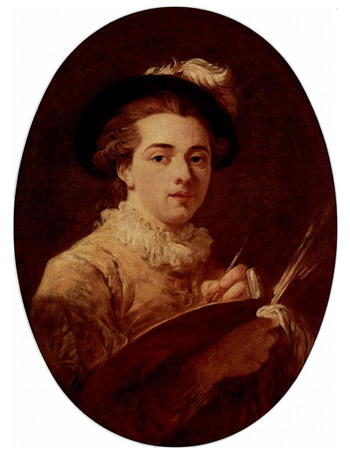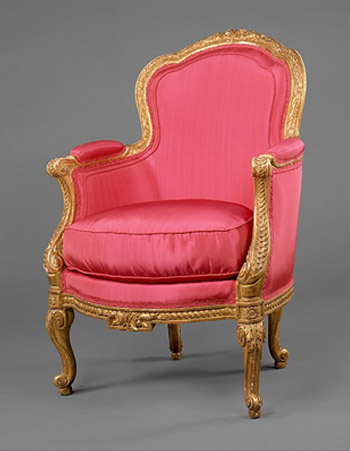The era shifts to the arts and literature of ancient Greece and Rome. Creativity and imagination bring achievements. Humanist scholars concerned about mankind are exalted. Painters begin to use worldly images in their work. Literacy among the secular world begins when the printing press is invented in Europe in the 15th century. North America is a beneficiary. See the recreated Gutenberg printing press at The International Printing Museum.
Jean-Honoré Fragonard (1732 – 1806) is born in the perfume capital of the world, Grasse, France. He begins his studies with Francois Boucher, a celebrated decorative artist of the 18th century and wins an award for promising artists to study at the French Academy in Rome.
Fragonard is not successful at first so he takes a break before returning to formal training. This interlude produces numerous romantic drawings of great gardens and the Italian countryside. His practice prepares him for painting recognizable Paris society, who eventually bring him fame.
The French Revolution of 1789 puts his painting style down and eliminates many of his aristocratic patrons. He turns to Jacques Louis David, a friend from his days in Rome, to find him a post with the Louvre Museum Commission, but it's uncertain why he loses the job six years later.
Fragonard spends the rest of his life painting little and passes almost unnoticed. As with other artists, his work is rediscovered, in about 1850.

Renaissance, French Rococo movement between (1700-1770) springs from a morality that puts pleasure above everything else. The art reflects the French Aristocracies' time-wasting amusements and lack of concern for the citizens they rule.
This charming over the top confection most likely for Marie Antoinette's dressing room expresses the increasing interest in comfort and informality.
The fabric between the arms and the seat of the chair, together with the concave back, classify it as one of the immensely popular new types introduced during the tumultuous years prior to the French Revolution. Ironically, the young lady in the painting wears a shepherdess hat associated with the virtue ascribed to shepherds who are known for living close to nature, in the eighteenth century,
By 1765, the Rococo style is under critical attack. When the political bubble bursts, it becomes the French Revolution. The Swing wraps up the Rococo movement with style. Neoclassicism is taking its place.
Go on to Describe, Analyze, Interpret & Conclude. Contact me for help.

The Swing (1767.Oil on canvas. 32 x 25 in. (81 x 64 cm.) has a charming story attached to it. The writer, Charles Collé, records having met Gabriel-Francis Doyen, on 2 October 1767. Doyen is the first choice to receive the commission, but not the last. This is an excerpt from Fragonard's "The Happy Accidents of The Swing."
Between 1765 and 1770 Fragonard executes several portraits in which sitters wear fanciful costumes, and many paintings are of a suggestive nature. The Swing shows off his mastery of rapid, delicate brushwork, and beautifully lit busy and quiet spaces.
Even though the young sophisticate is the logical artist to paint this picture - others have a different opinion.
Pictures like The Swing bring Fragonard harsh criticism from Denis Diderot, a leading philosopher of the Enlightenment, a popular intellectual movement during the seventeenth and eighteenth centuries. Diderot charges the artist with frivolity and admonishes him to have a little more self-respect.